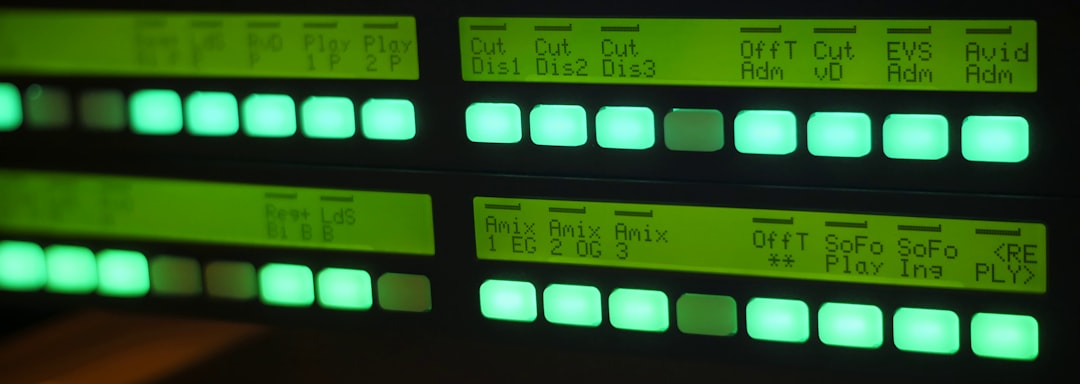The Ultimate Guide to Active PA Speakers: Power, Portability, and Perfect Sound for 2025
- Share
- Issue Time
- Oct 16,2025
Summary
Dive into the world of active PA speakers. This guide covers everything from active vs. passive, understanding power ratings, and key features like DSP and Bluetooth to help you choose the perfect speaker.

The Ultimate Guide to Active PA Speakers: Power, Portability, and Perfect Sound for 2025
Whether you're a gigging musician, a mobile DJ, or a public speaker, the quest for clear, powerful, and portable sound is universal. The solution for many lies in the world of active PA speakers. These all-in-one powerhouses have revolutionized live sound, simplifying setups while delivering professional-grade audio. This guide will walk you through everything you need to know to find the perfect active speaker for your needs.

What Are Active PA Speakers? The All-in-One Powerhouses
A public address (PA) system is designed to amplify and distribute sound to an audience. Active PA speakers, also known as powered speakers, are self-contained systems that include the speaker drivers and a built-in amplifier. This integrated design means you don't need a separate, external power amplifier to make them work; you simply plug them into a power source and connect your audio input. This contrasts with passive speakers, which require an external amplifier and more complex cabling. All-in-one systems, like modern column PAs, are a popular type of active speaker, often including a mixer and other features in one package.
Active vs. Passive Speakers: What's the Real Difference?
Choosing between active and passive speakers is a fundamental decision when building a sound system. The primary difference is the location of the amplifier.
- Active Speakers: The amplifier is built directly into the speaker cabinet. This means the manufacturer has perfectly matched the amp's power and characteristics to the speaker drivers, ensuring optimal performance and efficiency. They are generally heavier than their passive counterparts but far simpler to set up.
- Passive Speakers: These require an external power amplifier. This offers more flexibility for system customization and upgrading individual components, but it also demands more technical knowledge to correctly match the amplifier's power (wattage) and impedance (ohms) to the speakers.
For most users, from solo performers to small bands, the convenience and guaranteed performance of active speakers make them the superior choice.
The Core Benefits of Choosing an Active System
The popularity of active PA systems isn't just about convenience. They offer several distinct advantages:
- Simplicity and Speed: With fewer components and cables, setup is incredibly fast. This is a huge benefit for anyone who needs to set up and tear down their gear frequently.
- Optimized Performance: The internal amplifier is engineered specifically for the speaker's drivers, eliminating guesswork and ensuring a high-quality, efficient sound.
- Portability: Many active systems, especially column arrays and all-in-one models, are designed for easy transport. Lightweight materials and compact designs make them easy to carry and fit into a vehicle.
- Integrated Features: Modern active speakers often come loaded with features like multi-channel mixers, Bluetooth connectivity, and digital signal processing (DSP), making them true all-in-one solutions.
Understanding Power Ratings: Watts, SPL, and What Really Matters
When you see a speaker advertised with "2000 Watts," it can be misleading. While wattage indicates the power of the amplifier, it doesn't tell the whole story about how loud the speaker can get. The more important metric is the Maximum Sound Pressure Level (Max SPL), measured in decibels (dB). SPL is a direct measurement of the acoustic output, or loudness, of the speaker.
A higher SPL rating means a louder speaker. For example, a speaker with a max SPL of 132dB, like the LD Systems Maui 44 G2, will be significantly louder than one with a lower rating, even if their wattage is similar. Always prioritize a high Max SPL over a high wattage number when comparing speakers for sheer volume.
Key Features to Look For in a Modern Active Speaker
Beyond power, several features define a great active speaker:
- Driver Size and Configuration: Speakers have woofers for low frequencies and tweeters for high frequencies. A larger woofer (e.g., 12-inch or 15-inch) can generally produce deeper bass. Column array systems use multiple small drivers arranged vertically to provide wide, consistent sound coverage.
- Frequency Response: This tells you the range of frequencies the speaker can reproduce. A wider range, especially on the low end, means richer, fuller sound.
- Dispersion: This refers to how the speaker spreads sound horizontally and vertically. A wide horizontal dispersion (e.g., 180 degrees) ensures that the entire audience, from left to right, hears clear audio. Column arrays are particularly known for their excellent dispersion and consistent volume from the front to the back of the room.

The Brains of the Operation: Onboard DSP and Mixing
Many modern active speakers feature a powerful built-in Digital Signal Processor (DSP). This is like having a mini-computer inside your speaker that can optimize the sound. Common DSP features include:
- EQ Presets: Settings optimized for different applications like 'Music,' 'Live,' 'Speech,' or 'Club'.
- Feedback Suppression: Automatically detects and eliminates feedback squeals.
- Limiters: Protect the speaker from damage by preventing clipping and distortion at high volumes.
- Crossovers: Intelligently directs frequencies to the correct driver (lows to the woofer, highs to the tweeter).
Some high-end models, like the JBL PRX One, feature comprehensive onboard digital mixers with effects from brands like Lexicon and dbx, allowing you to mix a small band without an external console.
Connectivity is King: Inputs, Outputs, and Bluetooth Streaming
An active speaker is only as useful as what you can plug into it. Look for a system with a variety of inputs to match your needs:
- Combo XLR/TRS Jacks: These versatile inputs can accept microphones (XLR) and line-level or instrument sources (1/4-inch TRS).
- Hi-Z Input: A high-impedance input designed specifically for plugging in electric or acoustic-electric guitars and basses without a separate DI box.
- Bluetooth: Essential for wireless audio streaming from a phone or laptop, perfect for playing backing tracks or break music.
- Mix Out: An output that lets you send your mixed signal to another speaker to expand your system.
Types of Active PA Speakers: From Point-Source to Column Arrays
Active speakers come in several form factors, each suited to different applications.
Traditional Point-Source Speakers
These are the classic "speaker-on-a-stick" boxes. They are versatile and powerful, often available with different woofer sizes (e.g., 10", 12", 15"). They are great for front-of-house sound for bands and DJs but may require separate monitors.
All-in-One and Column Array Systems
These have become incredibly popular due to their portability and unique sound characteristics. A column array consists of a subwoofer base unit and a tall, slim column containing multiple small drivers. This design provides extremely wide horizontal sound coverage and consistent volume over distance, reducing the need for separate monitors as performers can often hear themselves from the main system. Models like the Bose L1 series, EV Evolve series, and JBL EON ONE are leading examples.
Battery-Powered Speakers
For ultimate portability, battery-powered active speakers like the JBL EON ONE Compact or Bose S1 Pro+ are perfect for buskers, outdoor events, or any situation without easy access to power. They pack mixers, Bluetooth, and impressive sound into an ultra-compact package.
Who Should Use Active PA Speakers?
The versatility of active speakers makes them ideal for a wide range of users:
- Singer-Songwriters and Small Bands: Column arrays and all-in-one systems are perfect, offering easy setup, built-in mixing, and enough power for small to medium venues.
- Mobile DJs: A pair of powerful active speakers with subwoofers provides the punch needed for weddings and parties.
- Public Speakers and Corporate Presenters: The clarity and feedback resistance of column systems ensure every word is heard.
- Houses of Worship: The discreet design and even coverage of column PAs are well-suited for acoustically challenging spaces.
How to Choose the Perfect Active PA Speaker for Your Needs
Choosing the right speaker comes down to assessing your primary application. Consider these questions:
- Audience Size: How many people do you typically perform for? This will determine the power (Max SPL) you need.
- Portability: How important is weight and ease of setup? If you're a solo performer, a lightweight column system is a huge advantage.
- Inputs Needed: How many microphones and instruments do you need to plug in at once? Check if the onboard mixer is sufficient or if you'll need an external one.
- Application: Will you be playing music with heavy bass, or is vocal clarity the priority?
Here is a simple table to help guide your decision:
| Feature | Solo Performer (Cafe) | Mobile DJ (Wedding) | Small Band (Pub) |
|---|---|---|---|
| Recommended Type | Battery-Powered or Compact Column PA | Pair of 12" or 15" Point-Source with Subwoofer | Column Array System with Mixer (e.g., EV Evolve 50M) |
| Key Feature | Portability, Hi-Z input | High Max SPL, Deep Bass Response | Multiple Inputs, Onboard Mixer, Good Dispersion |
| Example Models | Bose S1 Pro+, JBL EON One Compact | RCF EVOX JMIX8, QSC K12.2 | Electro-Voice EVOLVE 50M, JBL PRX One |
The Future of Live Sound
Active speaker technology continues to advance. We're seeing more powerful and efficient amplifiers, more sophisticated DSP, and lighter, more durable materials. Features once reserved for high-end professional touring rigs, like digital mixers and app-based remote control, are now standard on many portable PA systems. As this technology becomes even more accessible, achieving professional-quality live sound is easier than ever.